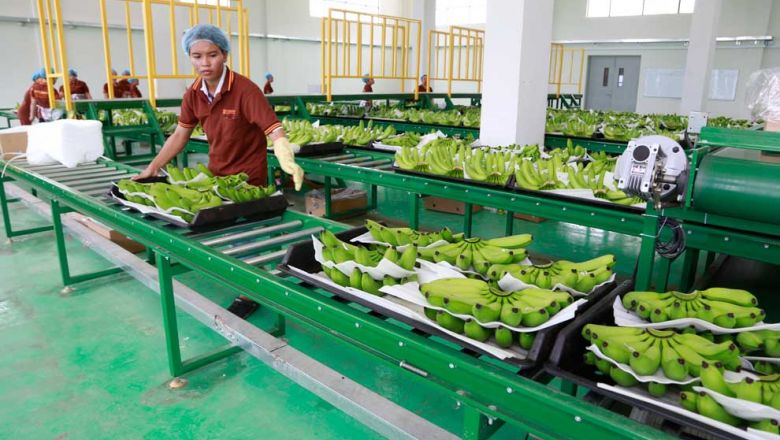Non-rice agricultural exports hit 5 million tonnes in first 11 months
Non-rice agricultural exports hit 5 million tonnes in first 11 months
Cambodia exported 5.05 million tonnes of non-rice agricultural products in the first 11 months of this year, climbing 46 per cent from the same period last year, the Ministry of Agriculture, Forestry and Fisheries reported. 
The ministry lists 67 non-rice agricultural products on the roster of official exports, which were sold to 46 countries and territories.
Main products include cassava chips, fresh bananas, natural rubber latex and cashew nuts which weighed in at 1.31 million; 300,174; 290,700; and 214,721 tonnes, respectively, representing 8.26, 116.97, 18.30 and 26.58 per cent increases year-on-year.
Corn kernels, fresh mangoes, fresh chilli, sesame seeds, dried mango, pepper and lotus seed exports reached 194,500; 90,801; 62,432; 5,799; 5,555; 4,982; and 3,815 tonnes, respectively, surging 63.85, 83.50, 38.02, 39.81, 159.60, 39.39 and 4,987 per cent from the year-ago period.
Meanwhile, dried chilli shipments clocked in at 1,800 tonnes, similar to the figure registered in the same period last year.
Minister Veng Sakhon told The Post on December 3 that the steady upswing in the Kingdom’s agricultural production was underpinned by government policy and efforts from stakeholders.
“Harvests and orders have gone up which, coupled with access to new markets, has increased Cambodia’s agricultural exports in the first 11 months by about 46 per cent year-on-year,” he said.
But Sakhon claims that this figure would be higher with informal exports taken into account.
Hong Vanak, director of International Economics at the Royal Academy of Cambodia, noted that the agricultural sector remained a lynchpin of economic growth for the Kingdom.
He noted that the uptick in export figures reflects the resilience of Cambodia’s food security and job creation for farmers.
“The involvement of the authorities and relevant parties in guiding farmers on cultivation methods and the use of seeds and fertilisers are essential to improving the export potential of Cambodian agricultural products.
“Farmers nowadays tend to imitate each other or follow old habits,” Vanak said.
He called on the authorities to work to ensure market stability and prices to reinforce the agricultural sector and instil confidence among the Kingdom’s farmers.
In October, Hun Lak, the director of yellow banana grower and exporter Longmate Agriculture Co Ltd, pointed out the Kingdom’s potential to expand production of yellow bananas to meet the needs of the Chinese and other market destinations.
China authorised Cambodia to export the ubiquitous fruit last year.
Lak told The Post that yellow-banana exports had ballooned in the first nine months of this year buoyed by elevated Chinese demand.
“Our yellow banana exports enjoyed such a surge due to the fact that they live up to Chinese buyers’ hygiene standards,” he said.
Cambodia official non-rice agricultural products reached 4,164,760 tonnes last year, ministry data show.













